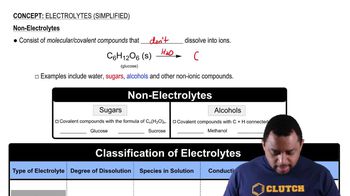Here are the essential concepts you must grasp in order to answer the question correctly.
IUPAC Nomenclature
IUPAC nomenclature is a systematic method for naming chemical compounds, ensuring that each compound has a unique and universally accepted name. It involves identifying the longest carbon chain, determining the functional groups, and applying specific rules for naming based on the structure of the molecule. This is crucial for accurately communicating the identity of organic compounds, including alcohols and phenols.
Recommended video:
Alcohols
Alcohols are organic compounds characterized by the presence of one or more hydroxyl (-OH) groups attached to a carbon atom. The naming of alcohols follows the IUPAC rules, where the suffix '-ol' is used, and the position of the hydroxyl group is indicated by a number. Understanding the structure and classification of alcohols is essential for determining their IUPAC names.
Recommended video:
Alcohol Classification Concept 2
Phenols
Phenols are a class of organic compounds that contain a hydroxyl group attached to an aromatic hydrocarbon ring. The presence of the aromatic ring influences the properties and reactivity of phenols compared to aliphatic alcohols. When naming phenols, the hydroxyl group is prioritized in the naming process, and the suffix '-ol' is also used, often with the position of the hydroxyl group specified.
Recommended video:
Electrolytes (Simplified) Concept 3
 Verified Solution
Verified Solution



 1:1m
1:1m
